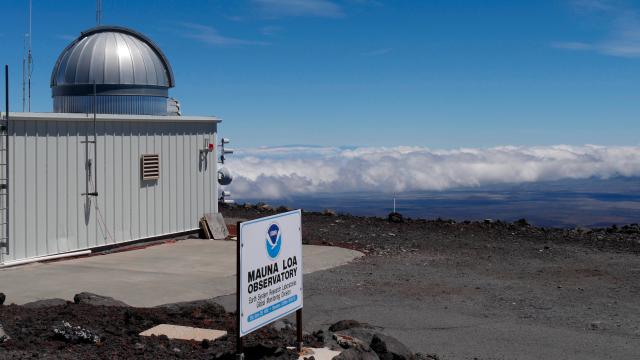The eruption Mauna Loa in Hawaii has temporarily disrupted one of the most important tools we have to keep track of CO2 emissions in the atmosphere.
The Scripps Institution of Oceanography at UC San Diego said Tuesday that the volcano’s lava flows had impacted the access road to the Mauna Loa Observatory, and the facility had lost power on Monday evening. As a result, the equipment used to maintain the Observatory’s carbon dioxide measurements — known as the Keeling Curve — is temporarily offline.
The measurements going offline is “a big deal,” Ralph Keeling, a researcher at Scripps and grandson of the tool’s creator, told CNN. “This is the central record of the present understanding of the climate problem. We probably can survive this, but it’s still a really key indicator that we hate to lose.”
The Keeling Curve is one of the most recognisable icons of climate science, a stark and troubling reminder of the ways that human activity is changing the atmosphere. The curve is named after Charles Keeling, a researcher at the Scripps Institution, who began taking carbon dioxide measurements from Mauna Loa in 1958; the facility’s location thousands of feet in the air and comparatively desolate surroundings — volcanic rock and few plants — make it ideal for taking CO2 measurements that are broadly representative of the rest of the planet. Originally, the measurements were intended to record routine atmospheric patterns throughout the seasons, but, as the years went on, researchers noticed an unmistakable trend upwards. Carbon dioxide levels at Mauna Loa have consistently broken records over the past few years.

Now, the Keeling Curve represents a striking visual record of how much the atmosphere is changing thanks to the massive amounts of CO2 we’re dumping into it. The Scripps Institution posts a daily atmospheric CO2 reading on its website, as well as charts depicting CO2 levels at various intervals over time.
This isn’t the first time that Mauna Loa has disrupted measurements of the Keeling Curve. In 1984, the volcano erupted and cut off power to the Observatory, and there were no CO2 measurements for a month until a generator was brought in. Budget cuts in the 1960s also temporarily halted the readings. Given the volcano’s unpredictability, it’s not clear when measurements will resume; Keeling said the uncertainty made this power cut “much worse” than other points in the Observatory’s history.
“In the long run, we’ll get back up again; we’ll get back to where we were, but we’ll have a gap of some sort that may have to be filled with surrogate data,” Keeling told CNN. “Right now, there’s no data at all. We’ve seen gaps for several months in the past, we don’t like that, so it’s really all hands on deck to try to figure out how to get something back up as soon as possible.”
